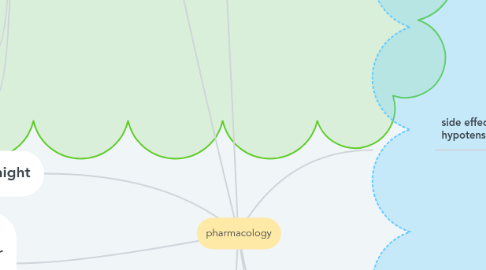
1. Imitrix - sumatriptan
1.1. -pril- ace inhibitor
1.2. -terol- bronchodialator
1.3. lovenox- Enoxaparin
1.4. -profen - antiinflammatory
1.5. –profen- anti- inflammatory
1.6. -statin - HMG CoA reductase inhibitor
1.7. ace inhibitor- pril
1.8. ARB- sartan
1.9. calcium channel blocker? calcium channel blocker
1.10. (PDE-5 inhibitor) - afil
2. stops taking atenolol, a beta-adrenergic receptor antagonist (B-blocker)- Exacerbate angina
3. upper respiratory infection- pharynx
3.1. tb agent -rifadin
3.2. multiple sclerosis agent-ampyra
3.3. antianxiety agent-Serax (oxazepam)
3.4. speech- frontal lobe
3.5. middle ear- malleus, incus, and stapes
3.6. bipolar agent- Eskalith (lithium)
3.7. cant focus his eyes- lens
4. Simvastatin- at night
5. medicines prescribed for
5.1. panic disorder- sertraline
5.1.1. back pain- oxycodone
5.1.2. hypercholesterolemia - rosuvastatin
5.1.3. asthma- salmeterol
5.1.4. meperidine - acute pain
5.1.5. minocycline- - acne
5.1.6. nasal congestion-Pseudoephedrine
5.1.7. nortriptyline- depression
5.1.8. uti- ciprofloxacin
5.1.8.1. alpha 1 receptor antagonist- tamsulosin
5.1.9. hypertension- torsemide
5.1.10. promethazine- nausea
5.1.11. anti epileptic- promethazine
5.1.12. rebound hypertension occur- Hypertension and atrial fibrillation
5.1.13. Synthroid, levothyroxine- Hypothyroidism
5.1.14. Alzheimer- Aricept® (donepezil)
5.1.15. Detrol® (tolterodine) 2 mg- overactive bladder
5.1.16. (GERD)- Dexilant® (dexlansoprazole)
5.1.17. Non-benzodiazepine sedative-hypnotic medications- insomnia
5.1.18. benzodiazepine-Zaleplon
5.1.19. opioid- cough
5.1.20. Bacterial infections- antibiotics
5.1.21. anti-epileptic drug class- nerve pain
5.1.22. Gingko- improve memory
5.1.23. Bumetanide and furosemide - lower bp
5.1.24. antiarrhythmics - Stabilize cardiac nerve impulses
5.1.25. antiemetics - Block neurotransmitters associated with nausea
5.1.26. (TCAs)- Block the reuptake of serotonin and norepinephrine
5.1.27. sulfonylureas- Stimulate the pancreas to secrete insulin
5.1.28. (DPP-4) inhibitors = Delay the breakdown of incretins
5.1.29. non-steroidal anti-inflammatory drugs (NSAIDs)- Block cyclooxygenase enzymes
5.1.30. anti-gout agents- Block the formation of uric acid

